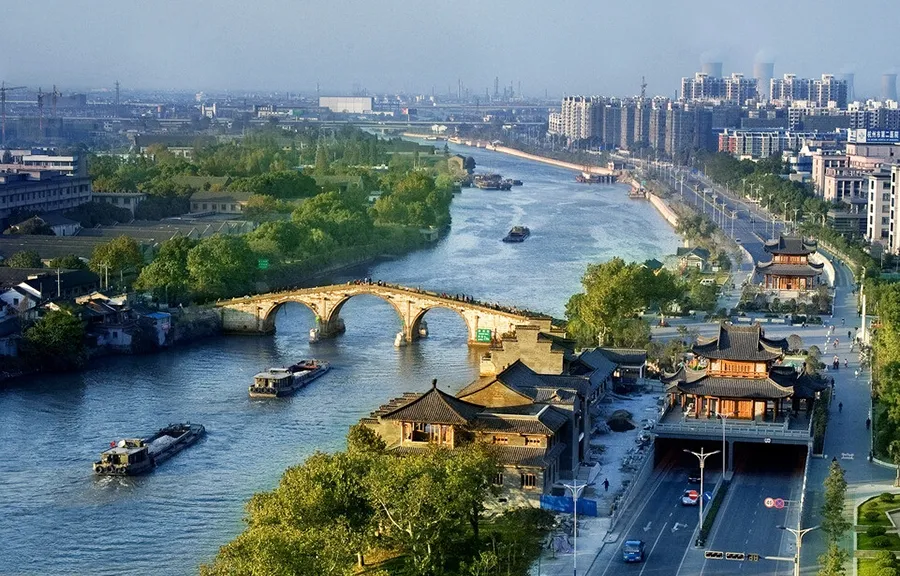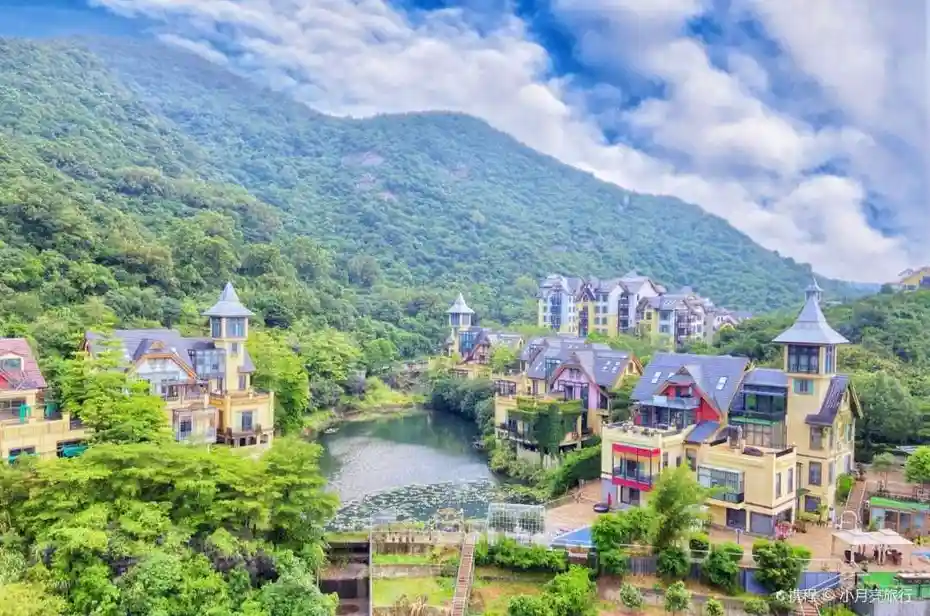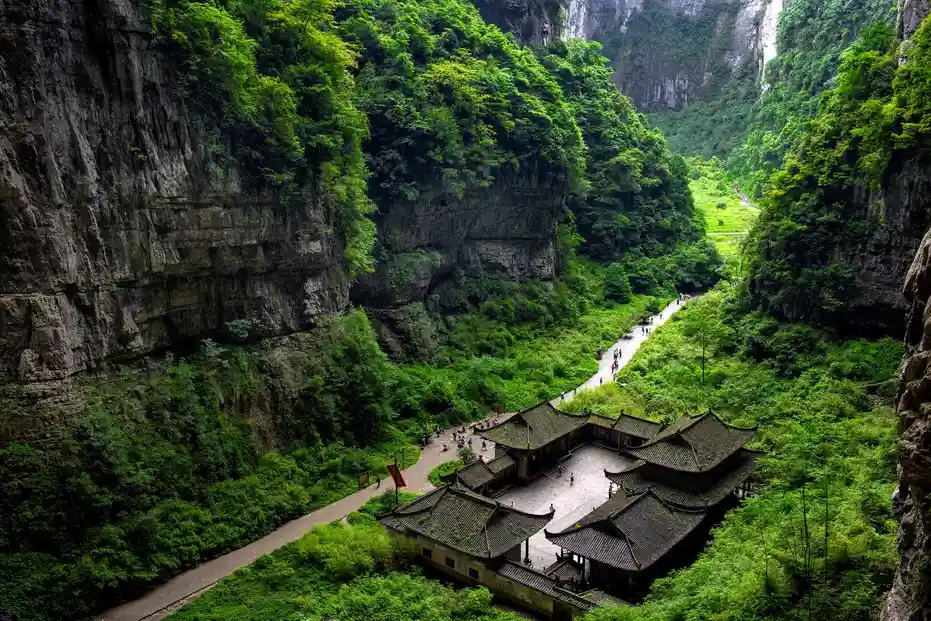Introduction
The Beijing-Hangzhou Grand Canal is one of the oldest and longest man-made waterways in the world. Stretching over 1,700 kilometers, it connects northern and eastern China. In Hangzhou, the canal’s southern terminus, history and modern life flow side by side. This section of the waterway is not just a relic—it’s a living cultural landscape.
Today, the Beijing-Hangzhou Grand Canal Hangzhou Scenic Area draws visitors with its scenic beauty and historical depth. Whether you’re a history enthusiast, a culture seeker, or a casual traveler, this destination offers something unique. From ancient bridges to vibrant riverside parks, the area blends heritage with urban charm.
This guide explores the highlights, history, and practical tips for visiting. You’ll learn about key attractions, transportation options, and the best times to explore. By the end, you’ll be ready to plan an enriching trip along this UNESCO World Heritage site.
Historical Significance of the Grand Canal
The Beijing-Hangzhou Grand Canal dates back over 2,500 years. First constructed during the Spring and Autumn period, it was expanded under the Sui Dynasty. It served as a vital transport route for grain, salt, and troops.
For centuries, the canal fueled economic growth across China. Hangzhou, as a major terminus, became a hub of trade and culture. The city flourished during the Southern Song Dynasty, thanks in part to the canal’s role in commerce.
In 2014, UNESCO recognized the canal as a World Heritage Site. The Hangzhou section was included for its well-preserved structures and cultural continuity. Today, the Beijing-Hangzhou Grand Canal Hangzhou Scenic Area preserves this legacy.
Walking along its banks, you’ll see remnants of ancient docks, stone inscriptions, and traditional architecture. These features offer a tangible link to China’s imperial past. The canal isn’t just water—it’s a timeline of Chinese civilization.
Top Attractions Along the Hangzhou Canal
The scenic area features several must-see spots. Each offers a unique perspective on the canal’s history and beauty.
Guanghua Bridge and Riverside Parks
This iconic bridge spans the canal with elegant arches. At night, it lights up in colorful displays. The surrounding parks provide walking paths, green lawns, and photo opportunities.
China Grand Canal Museum
Located near the water, this modern museum showcases artifacts, maps, and interactive exhibits. Learn about the canal’s engineering, trade history, and cultural impact.
Xiangji Temple and Ancient Street
Just north of the canal, this temple complex features Tang Dynasty-style architecture. The adjacent street sells local snacks and crafts. It’s a great place to experience traditional Hangzhou culture.
Water Bus Rides
Take a scenic cruise on the canal’s water buses. Routes connect key landmarks and offer views of historic bridges and modern skyline contrasts. Day and evening trips are available.
Experiencing the Beijing-Hangzhou Grand Canal Hangzhou Scenic Area
To truly appreciate the area, engage with it beyond sightseeing. The Beijing-Hangzhou Grand Canal Hangzhou Scenic Area invites immersive experiences.
Start with a morning walk along the riverbank. The air is fresh, and locals practice tai chi or jog. Notice the willow trees and lotus ponds—design elements rooted in classical Chinese landscaping.
By afternoon, visit a canal-side teahouse. Try Longjing tea, a Hangzhou specialty. Many teahouses offer views of passing boats and historic architecture.
Evening brings a different charm. The illuminated bridges and water reflections create a romantic atmosphere. Consider a dinner cruise or a stroll through the lit pathways.
The scenic area is designed for both relaxation and discovery. It balances preservation with public access. Whether you’re alone or with family, the experience feels personal and meaningful.
Best Times to Visit
Timing your trip enhances your experience. Each season offers distinct advantages.
- Spring (March–May): Pleasant temperatures and blooming flowers. Ideal for walking and photography.
- Summer (June–August): Warm and humid. Evenings are lively, but midday heat can be intense.
- Autumn (September–November): Cool air and clear skies. A top choice for comfort and scenic views.
- Winter (December–February): Cold but less crowded. Great for quiet reflection and off-peak visits.
Festivals also influence visit timing. The Hangzhou Canal Culture Festival in October features boat parades and traditional performances. Check local event calendars before planning.
Avoid national holidays like Golden Week (early October), when crowds peak. Weekdays are quieter and more enjoyable.
Transportation and Accessibility
Reaching the Beijing-Hangzhou Grand Canal Hangzhou Scenic Area is easy. Hangzhou has excellent public transit and road networks.
By Metro
Lines 3 and 5 serve key canal stations. Exit at Xiangji Temple or Dongsai Road for direct access. Metro is fast, affordable, and reliable.
By Bus
Multiple bus routes stop near the scenic area. Look for routes 3, 33, or 69. Real-time apps like Gaode Map help with navigation.
By Bicycle
Hangzhou has a public bike-sharing system. Rentals are cheap and eco-friendly. Dedicated bike lanes run along parts of the canal.
By Car
Limited parking is available near major entrances. Use official lots to avoid fines. Ride-hailing services like DiDi are convenient alternatives.
The scenic area is well-connected and walkable. Most attractions are within 1–2 kilometers of each other.
Cultural Insights and Local Life
The canal is more than a tourist spot—it’s part of daily life. Locals fish, exercise, and socialize along its banks.
You’ll notice traditional customs still practiced. Elderly residents play Chinese chess near stone benches. Vendors sell candied hawthorns and rice cakes. These small moments reflect Hangzhou’s living culture.
The Beijing-Hangzhou Grand Canal Hangzhou Scenic Area also hosts community events. Dragon boat races, calligraphy workshops, and seasonal markets bring people together.
Respect local etiquette. Keep noise low near residential zones. Ask before photographing individuals. Small gestures build goodwill and enrich your experience.
Dining and Culinary Experiences
Food is central to any travel experience. The canal area offers diverse options.
Local Specialties to Try
- Hangzhou-style Dumplings (Xiaolongbao): Steamed and juicy, best eaten fresh.
- Dongpo Pork: Braised pork belly, rich and slightly sweet.
- West Lake Fish in Vinegar Gravy: A classic dish with tender fish and tangy sauce.
- Osmanthus Cake: A sweet treat made with fragrant flowers from the region.
Many restaurants line the canal’s edge. Choose those with outdoor seating for scenic views. Night markets near Xiangji Temple offer quick bites and local flavors.
For a unique experience, book a dinner cruise. Enjoy a multi-course meal while floating past illuminated landmarks. It’s both romantic and memorable.
Preservation and Sustainable Tourism
The canal’s survival depends on conservation. Authorities have invested in water quality, heritage restoration, and public education.
Efforts include:
- Regular dredging to maintain water flow
- Restoration of ancient bridges and docks
- Strict building codes to protect scenic views
- Public campaigns promoting eco-friendly behavior
As a visitor, you can contribute. Avoid littering. Use reusable bottles. Support local vendors instead of chain stores.
Sustainable tourism ensures the Beijing-Hangzhou Grand Canal Hangzhou Scenic Area remains vibrant for future generations. Your choices matter.
Conclusion and Travel Tips
The Beijing-Hangzhou Grand Canal in Hangzhou is a treasure of history, culture, and natural beauty. It offers a peaceful escape within a modern city. From ancient bridges to lively markets, every corner tells a story.
Plan your visit during spring or autumn for the best weather. Use public transit to reach the scenic area. Spend at least half a day exploring on foot or by boat.
Don’t rush. Let the rhythm of the canal guide you. Pause at a teahouse. Talk to locals. Capture quiet moments along the water.
Whether you’re drawn to history, photography, or culinary delights, this destination delivers. The Beijing-Hangzhou Grand Canal Hangzhou Scenic Area is more than a stop on a map—it’s an experience that stays with you.
Visit with curiosity and respect. You’ll leave not just with photos, but with a deeper understanding of China’s enduring legacy.



